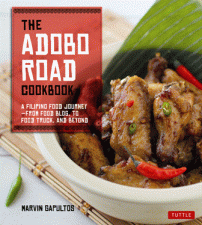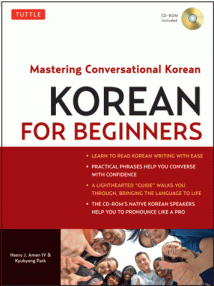 All week we’ve been thinking about friends, family, and colleagues down in Boston during the bombing at the Marathon and now the hunt for the bombers. As they say in Boston, it’s been awful. We hope it’s over soon and the wounded start recovering.
All week we’ve been thinking about friends, family, and colleagues down in Boston during the bombing at the Marathon and now the hunt for the bombers. As they say in Boston, it’s been awful. We hope it’s over soon and the wounded start recovering.
Until events in our backyard overtook us, we were all looking forward to the LA Times Festival of Books this weekend where our friends at Philippine Expressions are helping launch one of our biggest new cookbooks of 2013: Marvin Gapultos’s The Adobo Road Cookbook.
In a Huffington Post book review today, Anna Almendrala writes that “Filipino food has all the trappings of the next big ‘it-cuisine’ in the United States restaurant scene,” and she interviews Marvin, a writer known both for his blog Burnt Lumpia and as the operator of LA’s only gourmet Filipino food-truck, the late, great and much missed Manila Machine.
Like Filipino language and culture, the cuisine of the Philippines has blended local elements with successive waves of external influences. Chinese influenced foods include pancit (pahn-sit), which is a Filipino noodle dish akin to chow mein. Chow mein, 炒面 (Trad. 炒麵) chăomiàn, just means “stir-fried noodles”. The word pancit, however, comes to Tagalog by way of the nearby southern Chinese dialect Hokkien (Fujianese) word “pian i sit”, 便食, (Mandarin biànshí) which means “convenient eating”. And indeed while you can make an haute cuisine pancit, the basic recipe is simple and delicious.
Lumpia are Filipino spring rolls. The term comes from the Hokkien 潤餅 (Mandarian rùnbǐng). The second character 餅, in its basic sense of a “cake” or “biscuit”, was borrowed into Japanese and applied to mochi, sticky rice often eaten as a small cake.
From Spain comes the title dish adobo, from the Spanish verb adobar, which referred to dressing meat in vinegar for cooking. In Filipino cuisine, adobo is a dish of meat braised in vinegar and spices. As is often the case in the language of food, the word can be traced back to France, in this case the Old French adober (adouber, aduber), which meant “to arm a knight”. The word made its way into Anglo-Norman England in the ritualized phrase of naming: “I dub thee…” in ceremonies that conferred knighthood. If the connection between chivalry and cooking seems tenuous, consider the English word “dress”, which we apply to arrangements of both food and clothes.
Also from Iberian cuisine come empanadas. A well-known dish in Latin America, an empanada is a filling “enclosed in bread”, pan. Interestingly pan is not the Tagalog word for bread (tinapay is), but pan was borrowed by both Korean 빵 and Japanese パン. And because Spain’s main link to the Philippines was through colonial Mexico, cooks in the Philippines also incorporated New World foods like chocolate, potatoes, tomatoes, corn, jicama, and chayote into the traditional foods of the archipelago. Alongside SE Asian flavors like peanut sauces and lemongrass, such Asian, Spanish, and New World elements enriched cooking traditions based on foods native to the Philippines like the calamansi, a local citrus fruit.
If you’re in the Los Angeles area this weekend, you can meet Marvin Gapultos at the LA Times Festival of Books. He’ll be there at a booth run by our friends at Philippine Expressions. As a special gift here, in addition to a copy of Marvin’s book, I’ve got a free bamboo cooking set to give away. It includes utensils, steamers, placemats, and a mit. If you’d like to win this book and the bamboo cooking kit, click here to email me and write “Adobo” in the subject line. I’ll announce a winner next week.
Thanks to Patti from Suisun, CA who won last week’s copy of Korean for Beginners!



